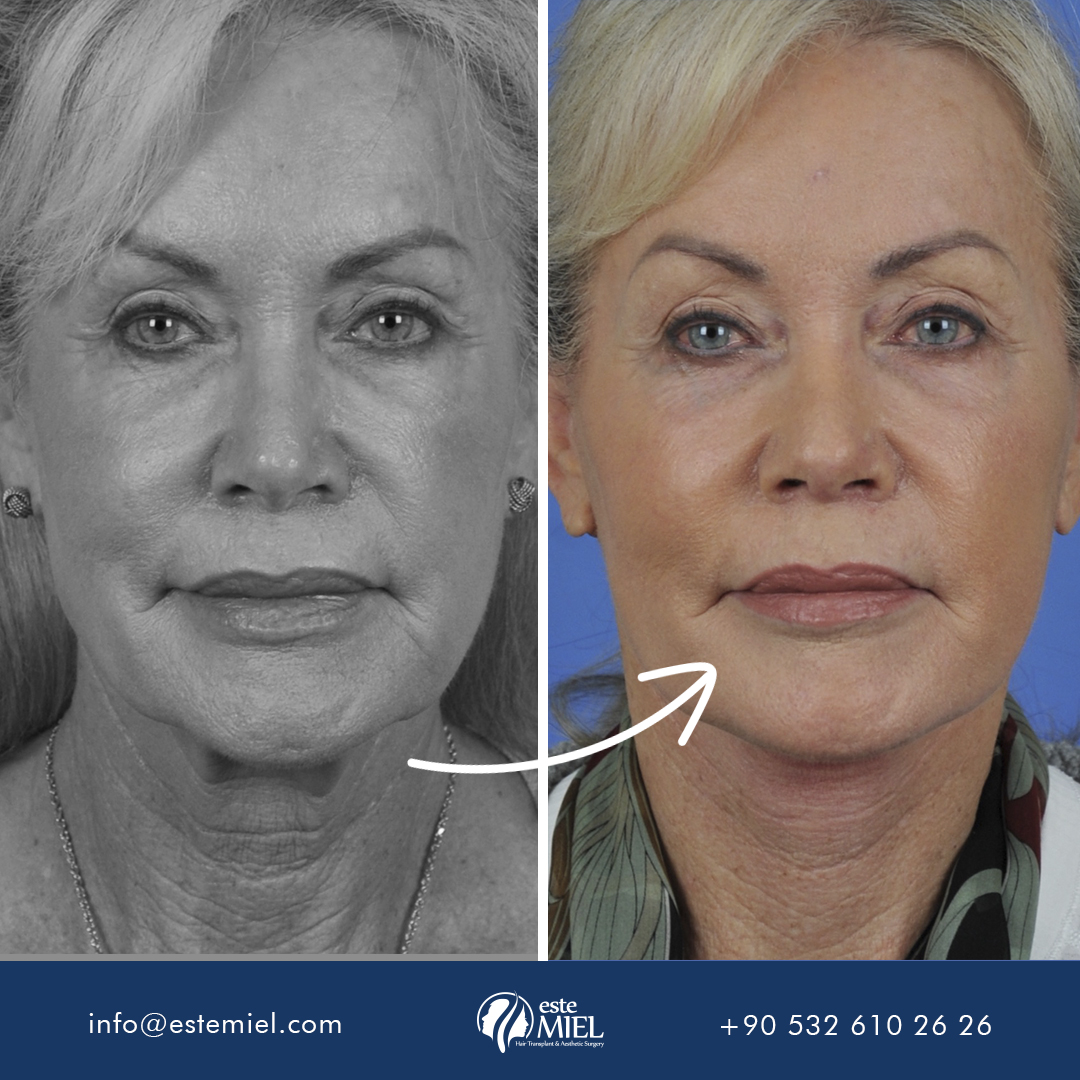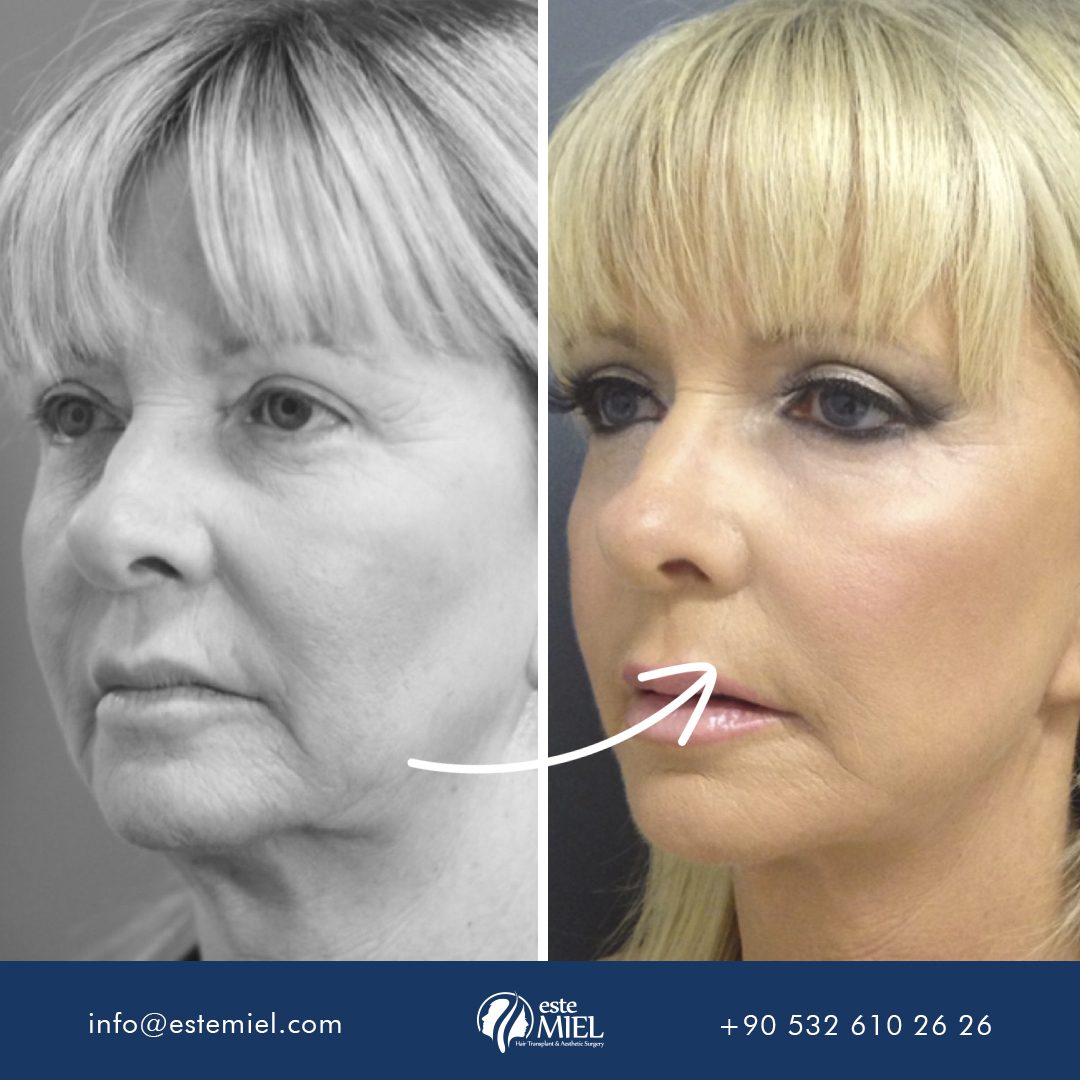Facelift
Facelift surgery aims to get rid of the saggy skin on the face, neck, and under the chin, if any. It is designed to elongate the entire face, including the cheekbones. When used with other aesthetic procedures, it can make the patient look younger and more vibrant. An anesthesiologist will be present during the facelift procedure, which is performed in a hospital setting. On average, it takes two to five hours.
A surgical incision is made from the scalp above the ear to the scalp behind the ear, and the facial skin is lifted in both directions. Special stitches are used to support the tissue containing the facial muscles that cause sagging on the face. The excess skin in the chin, cheeks and temporal areas is removed by removing the excess skin. After the surgery, the smile lines around the mouth also get smaller.
It is very important to discuss your surgical expectations with your surgeon during the pre-operative checkup to fully understand the procedure and the expected outcome. General anesthesia is applied in operations performed in a hospital environment. It is usually possible to be discharged that day if no additional procedures will be performed at the same time as the facelift surgery.
A scar from facelift surgery will always be visible on the scalp, near the temporal area. In addition, there is a 3-5 mm long but hardly noticeable scar in the under-chin area. It is estimated that all these traces will be hidden and unnoticed.
Facelift surgery does not have significant side effects. The face may feel tight or show signs of swelling or bruising. Some anesthesia patients may also have mild facial asymmetries, but these are only temporary. The dressing is placed so that the eyes, nose, and mouth remain open and should be removed within two days at the latest. In general, the stitches are removed after 5-7 days. It should take a week to recover and return to work. During the healing process, it is very important to protect the face from external factors and avoid strenuous activities. For two to three weeks, male patients should not shave their beards.
Despite the long-term effects of facelift surgery, the tension is not permanent, as your facial skin will continue to deteriorate over time. In five to ten years, another facelift may be considered.
There is no longer a typical age average for the facelift operation. People in their 30s have facelifts, as do people in their 80s and every age in between.
Make sure you are generally in well health before operation. Your blood pressure should be under control, and if you smoke you should stop prior to your operation.
The incisions for a facelift are hidden before the ear and extended up to the sideburn space. The incision also travels behind the ear onto the hair behind the ear. If we talk about a mini-lift, the incision is going to be shorter and doesn't extend as far in the area behind the ear.
The main difference is the length of the incision and degree of undermining or skin lifting. The facelift surgery generally requires a longer time, skin elevation, and an extended incision than the mini facelift.
Most patients can return to work and normal activity 10 to 14 days after surgery. The length of your time can vary depending on the kind of facelift procedure performed and how fast you heal. Full physical activity will usually resume three to four weeks after the procedure.



Helpline
You can reach us directly via our social media accounts, WhatsApp or phone number.